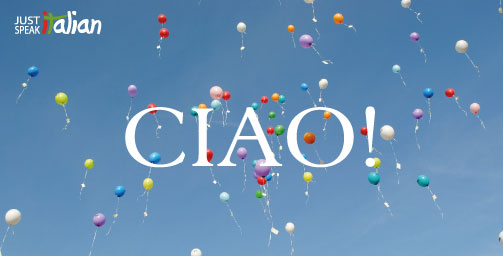23 Feb

Ciao è un saluto informale della lingua italiana usato sia quando incontriamo qualcuno sia quando ci allontaniamo da qualcuno. È tra i saluti più famosi e utilizzati anche all’estero: in seguito alle migrazioni italiane si è diffuso in tutto il mondo entrando nel lessico di molte lingue.
Ciao is an informal greeting in the Italian language that is used both to say “hello” and “goodbye” to someone. It is one of the most popular and used greetings abroad too: as a result of the Italian migrations, it spread all around the world joining the lexicon of many languages.
Ma voi sapete l’origine di questa famosissima parola?
Do you know the origin of this very famous word?
Nel dialetto veneto per parlare di una persona dei Paesi slavi si usava la parola “sciavo”, che significa “schiavo” e che deriva dal latino “sclavus”, perché la maggior parte degli schiavi nel mediterraneo erano slavi.
Nella Venezia del ‘700, il termine “sciavo” veniva usato dai servi per rivolgersi ai loro padroni. Il significato del saluto era: “sono tuo schiavo”, “ai vostri ordini”.
Successivamente, la parola “sciavo” si è trasformata in s-ciao e poi in ciao.
Venetians used to address Slavic people by the term “sciavo”, that means “slave” and derives from the Latin “sclavus”, since most of the slaves in the Mediterranean area came from the Balkans.
During the 18th century, in Venice the term “sciavo” was used by the slaves to address their masters. The meaning of this greeting was: “I am your slave”, “Yes, sir”.
Later, the word “sciavo” turned into s-ciao and then ciao.
È curioso notare come ciao, da saluto che esprimeva rispetto e metteva in evidenza la differenza sociale tra due persone di classi diverse, sia diventato col tempo informale e amichevole: oggi usarlo per salutare un professore o una persona anziana è considerato poco educato.
Ciao è un saluto informale usato tra amici o persone dello stesso status sociale e in famiglia, mentre verso i nostri “superiori” o verso i più anziani, si usano forme meno dirette.
It is weird to notice that at the beginning Ciao was a way to show respect and to highlight the social difference between two people, then it turned into an informal and friendly greeting: nowadays, if you use it to address a teacher or an old lady you may be rather inappropriate.
Ciao is an informal greeting, used between friends or people with the same social status and with family members, while if we talk to our manager or boss or to old people we use less direct ways.
Andiamo a leggere insieme le altre forme di saluto che usiamo più spesso in italiano.
Let’s have a look at the other most common greetings we use in Italian.
Buongiorno: good morning (formale – formal)
Buonasera: good evening (formale – formal)
Buonanotte: good night (sia formale che informale – both formal and informal)
Salve: hello (un po’ più formale di ciao – A bit more formal than ciao)
Arrivederci: goodbye (formale, quando si va via – formal, when you go away)
ArrivederLa: goodbye (più formale di arrivederci – more formal than arrivederci)
Ci vediamo: see you soon (informale, quando si va via – informal, when you go away)
Addio: goodbye (sia formale che informale, quando si saluta qualcuno che non si rivedrà presto – both formal and informal, when you say goodbye to someone you won’t see soon)
